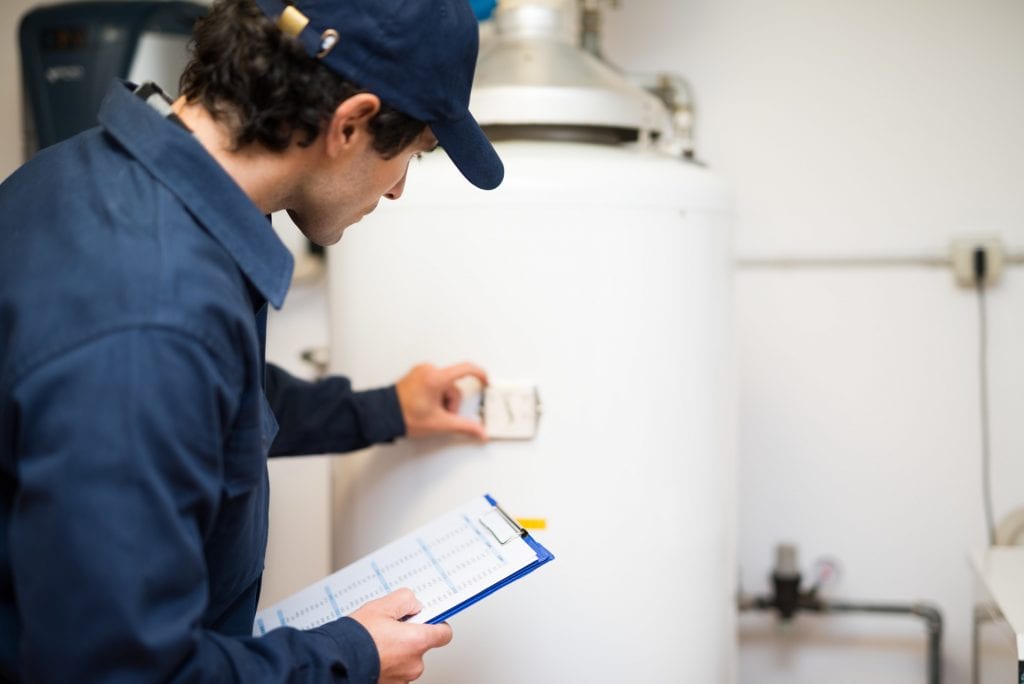
Did you know that the average life span of hot water heaters is 10 years?
That’s right!
However, factors such as improper installation and water hardness could cause early failure. Lack of maintenance and incorrect use can also make them break down sooner.
This is why it’s important that you learn how to check hot water heater for potential issues. This way, you’ll know what troubleshooting steps to carry out before you ring up a plumber.
Most importantly, you can avoid safety hazards, such as those caused by scalding water. Note that scald burns from hot water account for 35% of all burn injuries attended to by US burn centers each year.
Ready to learn the basics of inspecting and troubleshooting a faulty water heater? Then let’s dive right into it!
No Hot Water At All
In electric water heaters, this problem is usually caused by a power interruption. If everything else in your home runs except for the heater, the breaker for just the heater may have tripped. Check the breaker box to see if the switch for the heater has gone to the “OFF” side.
If it has, simply slide or flip the switch back to the “ON” position. Wait for a few minutes, then try running a few of your faucets. If the problem was only due to the tripped breaker, then you should have hot water again.
If you have a gas heater, its pilot light may have gone out, which may be due to a lack of gas or having no gas at all. If you’re unsure, you can try lighting it up before you call your gas provider. Most gas heaters have a pilot light cover/door right under the gas valve.
Depending on the type of heater you have, it may have two separate controls for the pilot light and the ignitor. If you don’t see an igniting button, then you’d need to manually light the pilot with a long lighter.
If none of these work, it’s possible that a key component of your hot water heater has broken. In electric heaters, defective thermostats are a top reason for having no hot water. In gas heaters, clogged or bent supply lines and faulty valve controls are usually to blame.
In such cases, it’s best you call a licensed water heater repair specialist. This way, they can inspect the equipment and determine what’s causing your no hot water issues.
You Keep Running Out of Hot Water
From incorrect tank size to broken dip tubes, here are some of the reasons that can cause a lack of hot water.
Tank Is Too Small
A considerable increase in your hot water use may now be too much for your current tank’s capacity. Your tank may be too small to meet your demands, which is why you always run out of hot water. If it’s a long-term increase, the best way to avoid running out of hot water is to upgrade and install a new water heater.
Broken Dip Tube
If there’s been no change to your hot water demands, the dip tube in your hot water heater may have failed. This is the part that pushes cold water to the bottom of the tank so that it can get heated.
If this becomes defective, it may not push enough cold water to the bottom. This can then lead to having insufficient hot water. It may also cause fluctuations in water temperature (AKA water not being hot enough).
Since the dip tube is inside the tank itself, the only way to confirm that it’s broken is to open the tank. This task is best left in the hands of pros. However, one way to diagnose this problem is to check the water pressure or strength of flow.
If the inadequate hot water issue occurs with weak water flow, a broken dip tube is a likely culprit. Parts of the tube may have broken off and ended up in faucet aerators. These particles can then clog up aerators, causing a decrease in water pressure or flow.
Fluctuating Water Temperature
Faulty thermostats can be “miscommunicating” with your heater. This can lead to the heater thinking it has heated the water to your desired temperature. As a result, the water may not be hot enough or be extremely hot.
Check your heater’s thermostat and make sure it’s set to 120 degrees Fahrenheit. This is warm enough to keep most water-borne pathogens at bay, but it’s not hot enough to cause scalding. Reset the water heater and then wait for a few minutes to check if the water temp has gone back to normal.
If this doesn’t do the trick, then you may already be dealing with a defective thermostat. Contact a plumber right away and make sure to shut the heater off in the meantime.
Reduced Water Flow or Pressure
This can happen if you run multiple faucets or showers at the same time. Not only will this reduce water flow — it’ll also cause the heater to run out of heated water sooner.
However, it’s also possible that your water tank and supply lines have developed clogs. Hard water is a common cause of such blockages, considering that 90% of all homes in the US get hard water. In many parts of Utah, such as Salt Lake City, residents have to deal with water considered to be “very hard”.
You can pre-test your water for hardness by filling a glass with tap water. Let it sit for a few minutes and then check if any sediments have settled at the bottom. If so, then that means you have hard water, and it may also be affecting your water supply.
The best long-term solution for hard water is to invest in a water softener. Soft water can help extend the life of your hot water heater, as well as your other water-using appliances. It also makes soaps and detergents clean better, so you can enjoy your baths and showers more.
Follow These Tips on How to Check Hot Water Heater for Problems Now
There you have it, your ultimate guide on how to check hot water heater for pesky issues like weak water flow. By knowing what you can do if you experience these issues, you may be able to fix some of them on your own. However, if the problem is too big to DIY, then it’s better (and safer!) to ring up the pros.
Having problems with a faulty hot water heater at home? We here at Beehive Plumbing can help! Connect with us now to schedule your water heater repair.













